Today in Met History: February 4
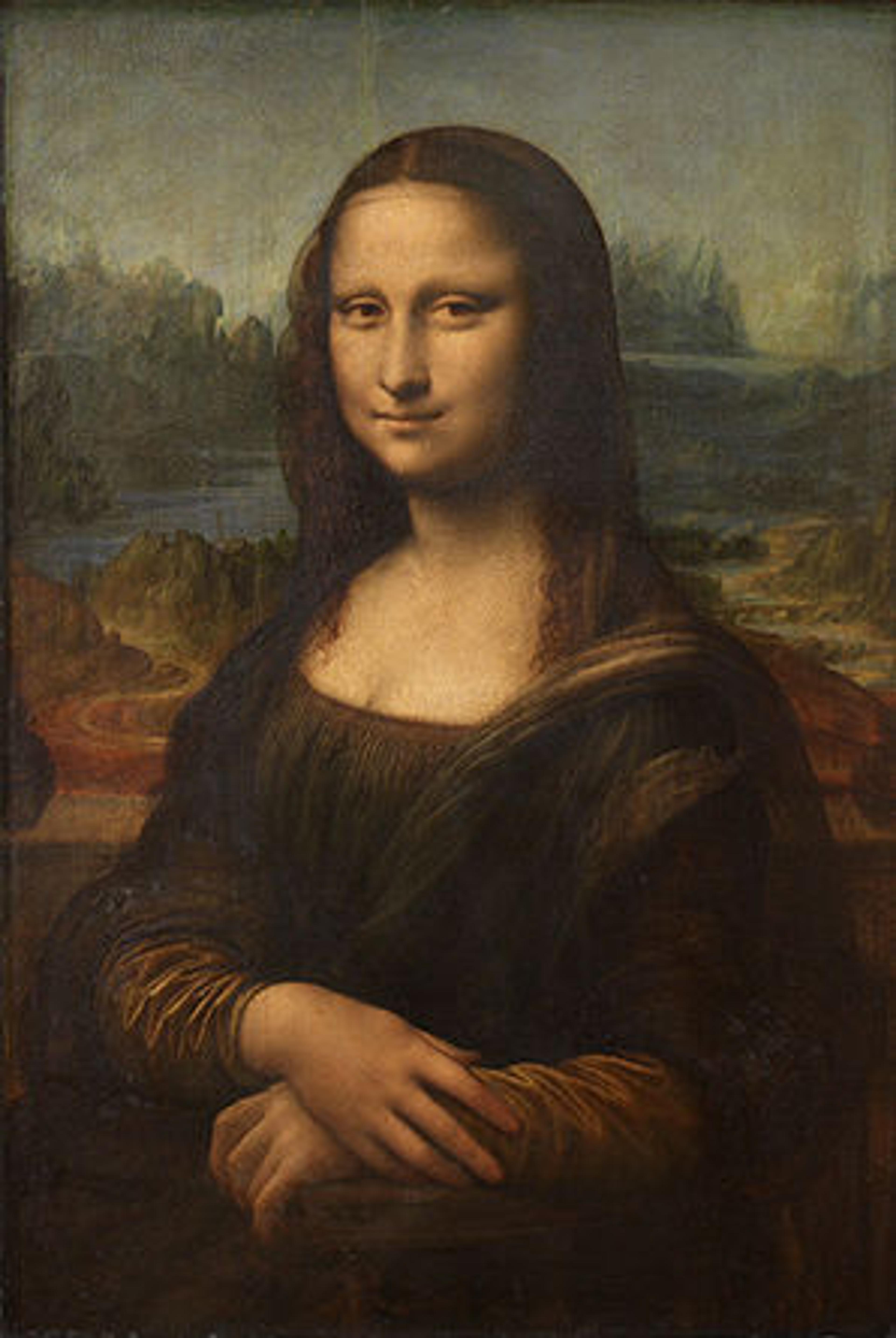
Leonardo da Vinci (Italian, 1452–1519). Mona Lisa (Portrait of Lisa Gherardini, wife of Francesco del Giocondo), ca. 1503–06. Oil on wood (poplar); 30 x 21 in. (77 x 53 cm). Musée du Louvre, Paris
«On Monday, February 4, 1963, a unique visitor entered The Metropolitan Museum of Art and remained in the building for the next three and a half weeks. Over one million people clamored to see her during her stay at the Museum, and the press reported extensively on her visit. To the great pleasure of the Metropolitan and its visitors, the Mona Lisa—perhaps the best known painting in the world—had come to the Museum as a loan from the Louvre.»
In the spring of 1962, André Malraux, the French minister for cultural affairs, was on an official visit to Washington, DC, when First Lady Jacqueline Kennedy approached him with a proposal to display the Mona Lisa in the United States. Malraux was open to the suggestion, and by the end of the year, all of France was abuzz with the possible overseas trip of La Gioconda. The painting had left French soil only once before, in 1911, when a former Louvre employee named Vicenzo Peruggia stole the work and transported it to Italy. Many in France opposed the loan on the grounds that a transatlantic journey would damage the painting; a group of curators at the Louvre threatened to resign if the painting were lent to the United States, and the newspaper Le Figaro printed an article asking the American people to refuse the loan.
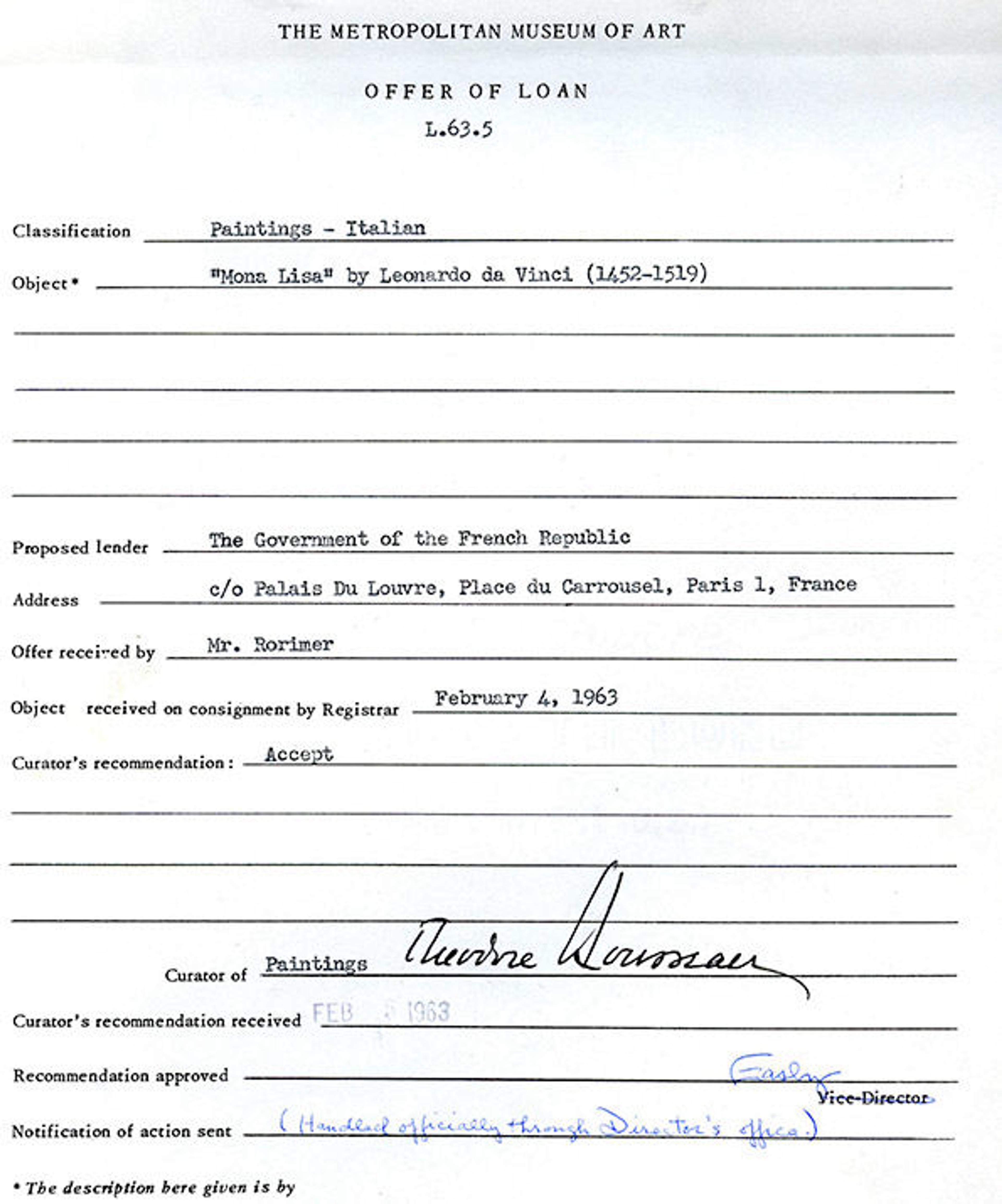
Offer of loan for the Mona Lisa. Office of the Secretary Records, The Metropolitan Museum of Art Archives
Despite resistance from the French public, the Mona Lisa was nonetheless removed from the Louvre for shipment to the United States. The painting, housed in a specially constructed, temperature-controlled case within a fireproof and watertight container, was put aboard the ocean liner SS France. The container was affixed to a bedframe in a deluxe cabin and escorted by security guards and museum officials, who kept a twenty-four-hour vigil over the precious passenger. Though the ship was scheduled to arrive in New York, the painting's first stop in America was not to be the Metropolitan. Rather, the work was slated to go on display only at the National Gallery in Washington, DC. It was not until the Mona Lisa was already in transit that the Metropolitan received official confirmation that it would also be able to exhibit the painting.
On December 19, 1962, the SS France, accompanied by the United States Coast Guard, entered New York Harbor as though it were carrying a visiting head of state. The White House had announced that the painting would receive the level of Secret Service protection normally reserved for the president of the United States, and thus local, state, and federal security officials met the French visitor at the dock. Upon its arrival, the painting was transferred to an air-conditioned van for transport to the National Gallery in Washington. All traffic along the transport route was stopped, and the procession drove through red traffic lights the entire way to its destination.
When the painting went on display at the National Gallery on January 8, 1963, the Metropolitan was already busily preparing to receive its important visitor. James J. Rorimer, the Museum's director, decided to exhibit the Mona Lisa in the Medieval Sculpture Hall, among the largest rooms in the Museum. While a small army of experts readied the gallery, the Portrait of a Young Woman by Lorenzo di Credi was used as a stand-in for the Mona Lisa.
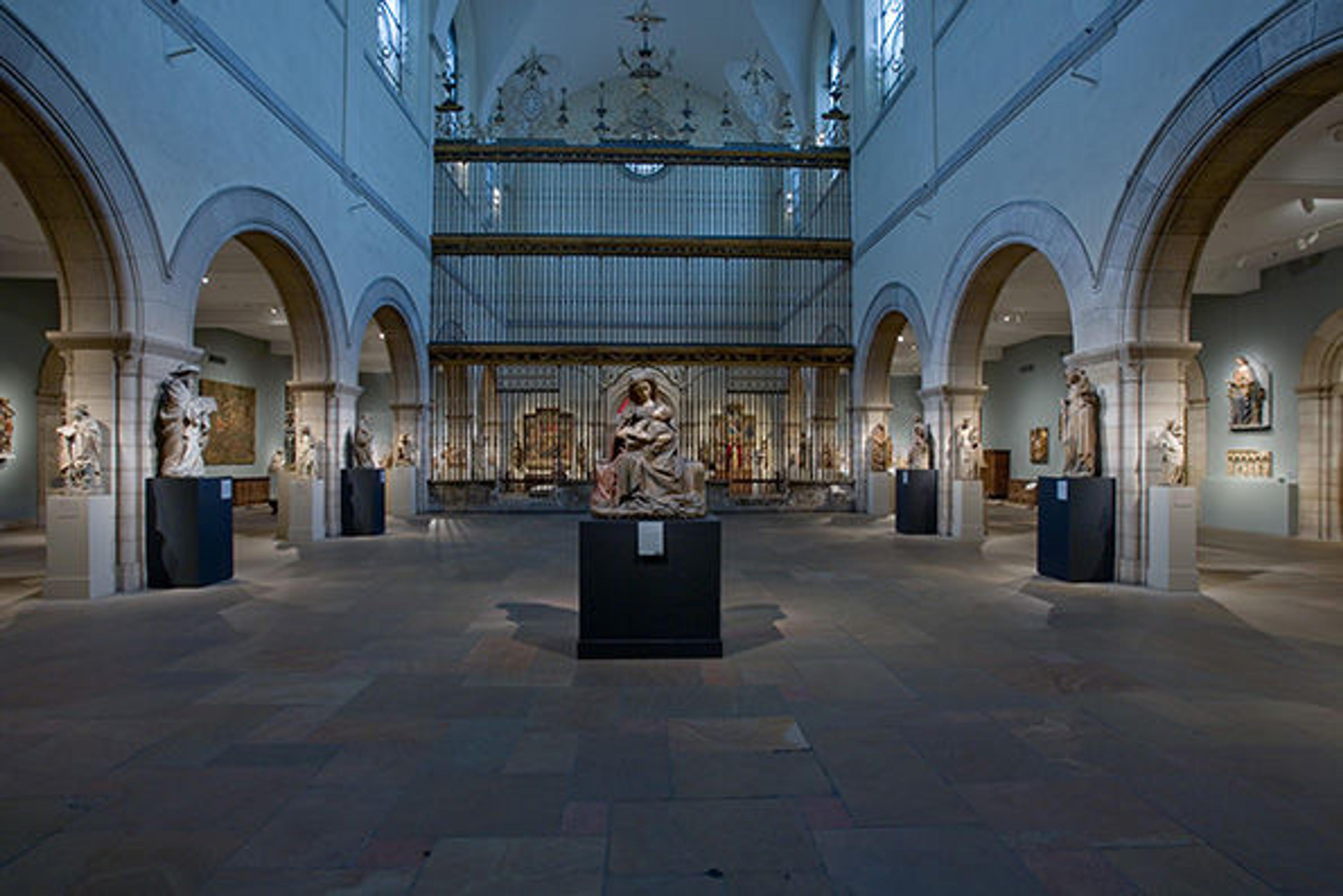
The Medieval Sculpture Hall at The Metropolitan Museum of Art
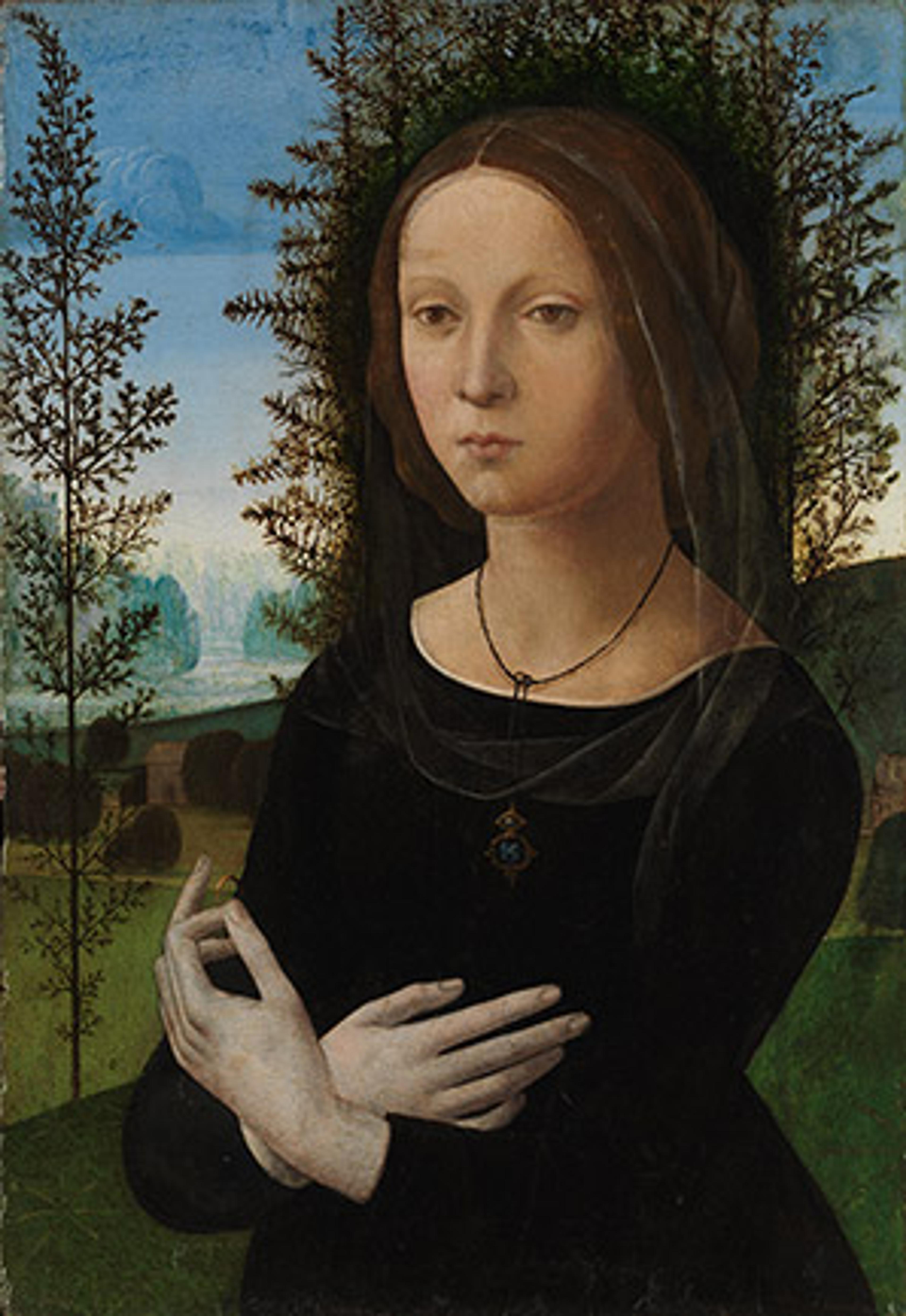
Lorenzo di Credi (Lorenzo d'Andrea d'Oderigo) (Italian, 1456/59–1536). Portrait of a Young Woman, ca. 1490–1500. Oil on wood; 23 1/8 x 15 3/4 in. (58.7 x 40 cm). The Metropolitan Museum of Art, New York, Bequest of Richard De Wolfe Brixey, 1943 (43.86.5)
When the painting finally arrived at the Metropolitan Museum on February 4, it was taken to a safe in one of the Western European Arts storerooms. It remained there under continuous observation until its official unveiling ceremony on February 6, when Mayor Robert Wagner officially welcomed the distinguished guest to New York. He said:
Tonight, serving as the personal representative of the President of the United States, and on his behalf, I welcome to the City of New York one of the most beautiful tourists we are ever likely to have. In behalf, too, of the eight million people of New York City, I bespeak the delight and excitement that her arrival has brought to us all.[1]
Hervé Alphand, the French ambassador to the United States, elaborated on the mystery surrounding the painting:
This painting has its personal legend. I shall not attempt to tell it to you in a few or in many words; great writers, lucid critics have tried and have acknowledged their defeat: we are dealing here with a mystery of human creativity, and that is doubtless why we keep turning to this enchanted face, questioning it from generation to generation. The fact is here, and indisputable. Mona Lisa is more than an extraordinary painting; she is the ideal woman and the ideal work of art. She continues to waken veneration and even hatred; when someone wants to make a scandal, to overturn the accepted rule of beauty, he attacks personally Mona Lisa; she received love letters, but also it is on her face that one pasted a moustache.[2]
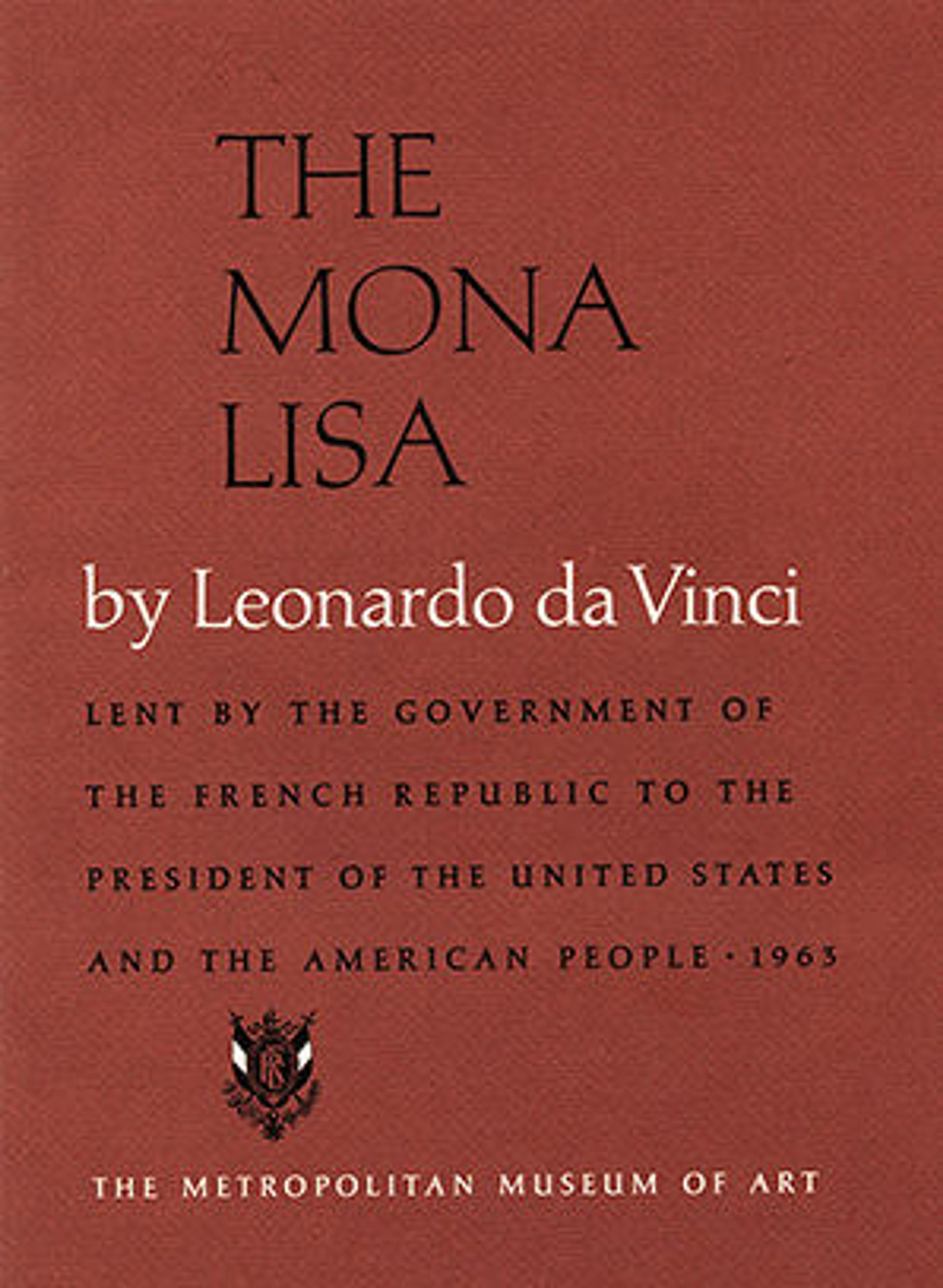
Cover of the Metropolitan Museum catalogue that accompanied the exhibition. Office of the Secretary Records, The Metropolitan Museum of Art Archives
The following morning, a long line began to form outside the Museum. The first person waiting behind the wooden barricades was a taxi driver from Brooklyn who got up at 4:30 a.m. and arrived at the Museum by 6:00 a.m., four hours before its scheduled opening time. Once the Museum opened, the line proceeded across the Great Hall, down the corridor to the right of the Great Hall staircase, through the Medieval Europe Gallery, and into the Medieval Sculpture Hall. Along this route, visitors could view explanatory panels containing close-up images of Mona Lisa's eyes, mouth, and hands, as well as photographs of the landscape found in the painting.
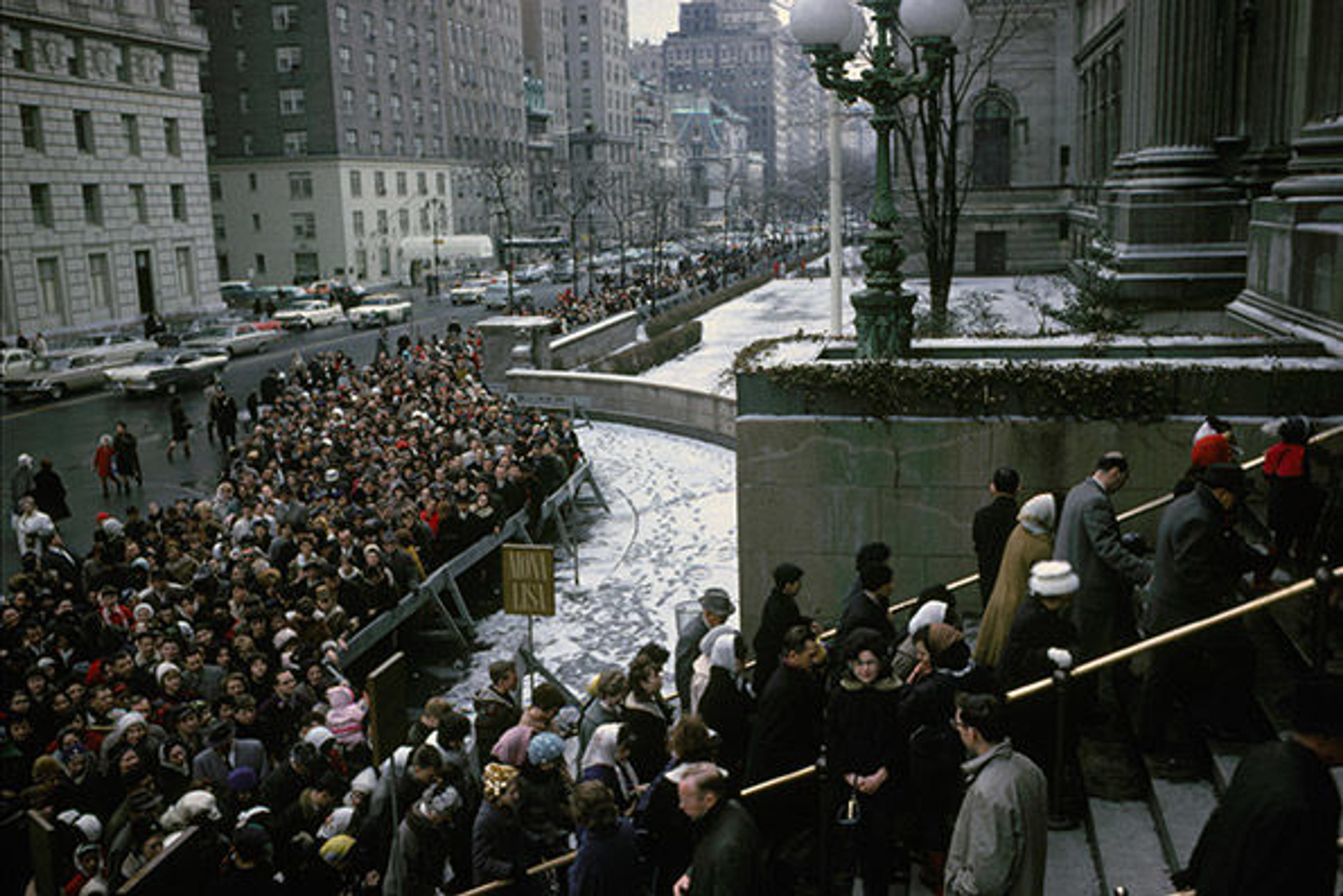
Line of people waiting in front of the Museum to see the Mona Lisa
When visitors finally arrived in the Medieval Sculpture Hall, La Gioconda was ready to greet them. The painting was mounted over a red velvet curtain in the center gate of the Spanish choir screen bisecting the hall. It was protected by bulletproof glass, flanked by two guards, and watched by detectives from behind. Visitors were allowed only a brief chance to view the painting in order to make room for the people behind them. Once a visitor had seen the work, he or she would be ushered out of the building through an exit to the Museum's parking lot. A few hardy individuals reportedly got back in line to repeat the process.
Over the next few weeks, the public's reactions to the Mona Lisa surprised Museum staff standing near the painting. One woman curtsied to the painting before exiting the hall. An associate curator, who offered to hold a man's small child so that he could view the painting unencumbered, was surprised when the man replied, "I want him to see it and then when he grows up I can tell him he saw it."[3]
The freezing temperatures outside made it all the more surprising that so many people patiently waited their turn to see the painting. On a particularly cold day, seventy young girls arrived from New Jersey and got in line at 10:00 a.m. They waited in line for over three hours before finally making their way inside the Museum. The shock of entering a warm building after being in the cold for such a long time caused many of them to faint. After recovering, the girls returned to their places in line and eventually saw the Mona Lisa.[4] On one record-breaking day, 63,675 people were able to see the painting.
To accommodate the number of schoolchildren coming to see the Mona Lisa, the Museum began to allow school groups to enter the building at 9:00 a.m. On average, the Metropolitan managed to let approximately five hundred children through before the official opening time an hour later.
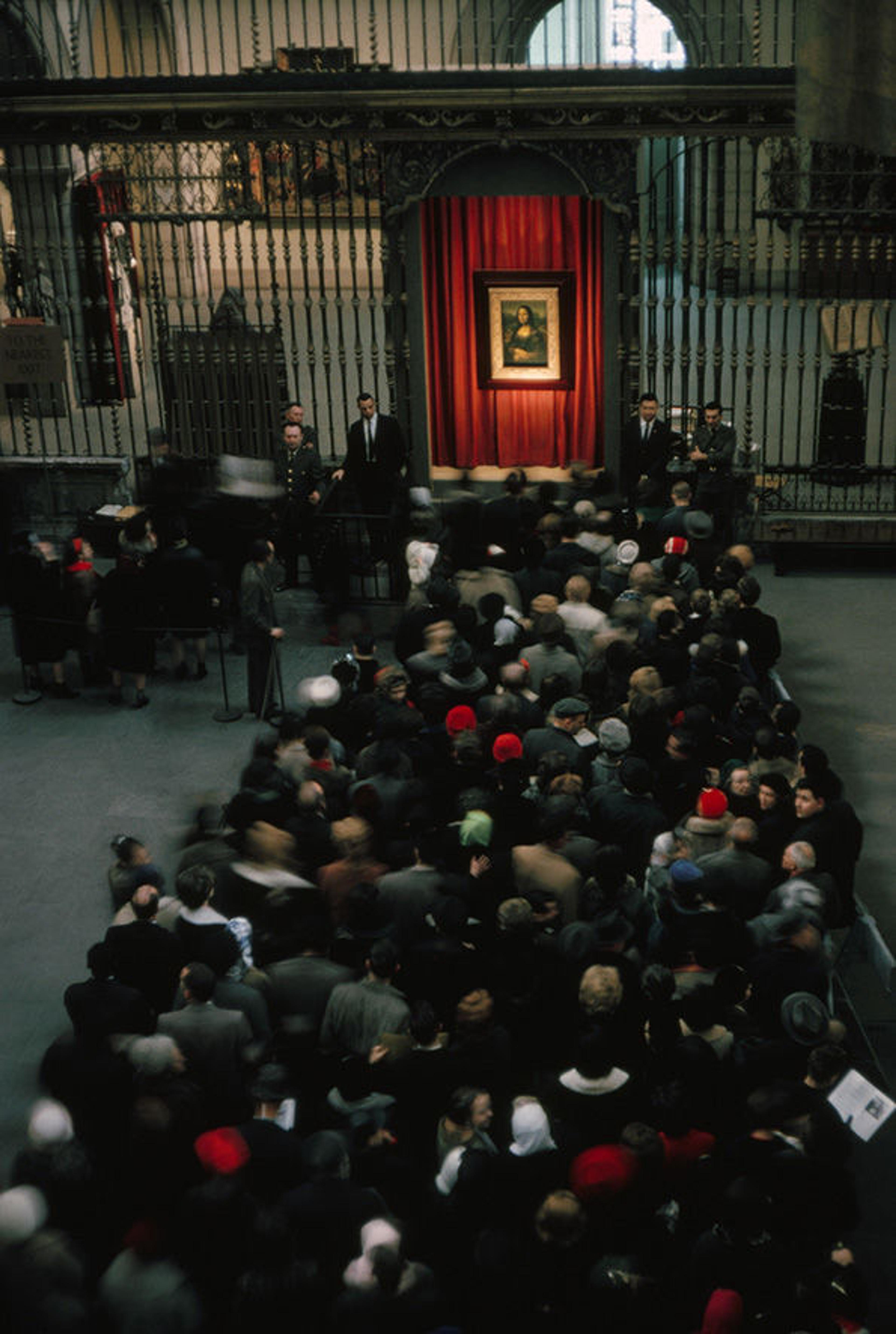
Elevated view facing west with people waiting in line to see the Mona Lisa
On March 4, the Museum's exhibition of the painting came to a close, and three days later, on March 7, the Mona Lisa was put aboard the SS United States for its trip back to France. On March 12, the painting was safely back in the Louvre, where it has remained ever since.
Earlier in the year, when criticized for his decision to lend the Mona Lisa to the United States, Malraux said, "When upon my return [to France] some peevish spirits will ask me on the rostrum, 'Why was the "Mona Lisa" lent to the United States?' I shall answer: 'because no other nation would have received her like the United States.'"[5] The enthusiastic reception of the Mona Lisa in this country—by the United States government, the Metropolitan Museum, and the crowds who viewed the painting—certainly justifies his sentiments.
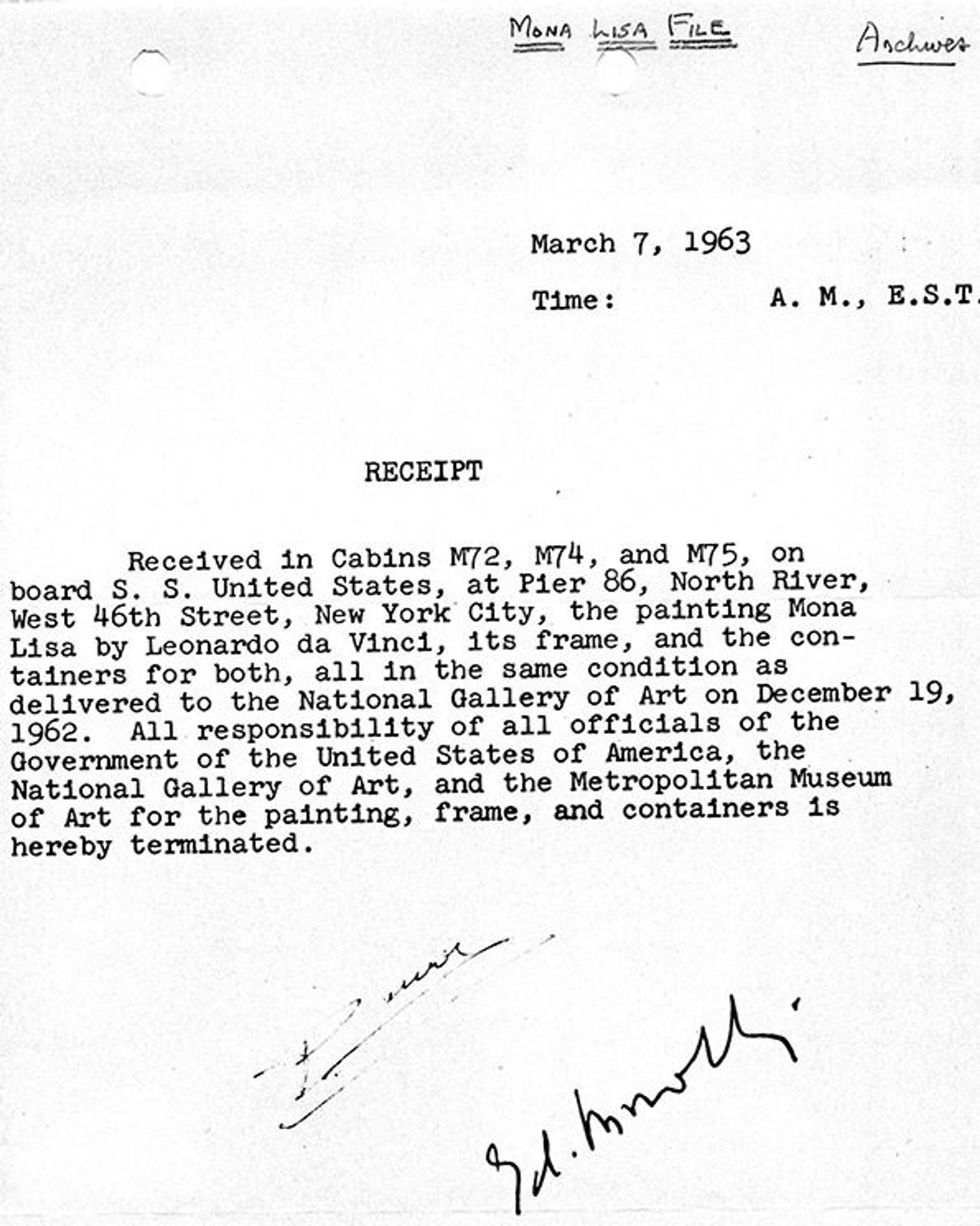
Return receipt for the Mona Lisa. Office of the Secretary Records, The Metropolitan Museum of Art Archives
Footnotes
[1] Excerpt from the February 6, 1963, opening ceremony speeches, Mona Lisa Loan Files, Office of the Secretary Records, The Metropolitan Museum of Art Archives.
[2] Ibid.
[3] Calvin Tomkins, Merchants and Masterpieces: The Story of the Metropolitan Museum of Art (New York: Dutton, 1970), 341.
[4] Ibid., 341–342.
[5] Marjorie Hunter, "President Attends Debut of 'Mona Lisa'," New York Times, January 9, 1963.
Aleksandr Gelfand
Aleksandr Gelfand was formerly an intern in the Museum Archives.